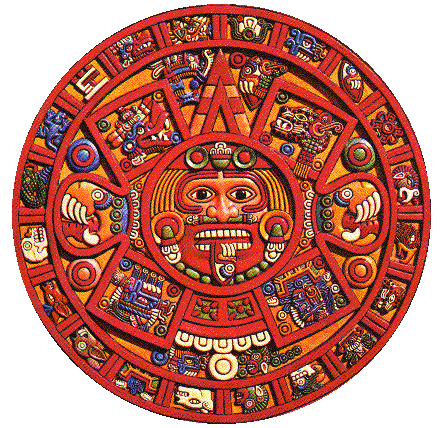The Mayan calendar

The Mayan calendar is the best known of all prophecies. It describes exactly to the day our present fourth age from August 11 3114 BC to December 21 2012. December 21st 2012 after the long calendar of the Maya, is the end of human civilization. People will enter an entirely new civilization that is completely independent from the present. There is an inscription of the Maya from the 7th Century, predicts the 2012 descent of the god Bolon Yokte (god of the dead world). The inscription comes from a place of Maya origin, called Tortuguero. Remarkably, occurred at that time also a rare constellation of stars, when the Sun is conjunct the Milky Way. The place where the sun meets the Milky Way, is located in the dark column of the Milky Way. According to the Mayan mythology, the winter solstice refers to a deity: One Hunahpu, also known as First Father. The sacred book of the Mayas, the Popol Vuh, prepares that the First Father may be born again and can start a new world age. The dark column has many mythological meanings: road of the underworld, the mouth of a cosmic monster birth canal of the Cosmic Mother. It is best to understand the importance of the column as a dark birth canal of the Cosmic Mother, who meets with the conjunction of the First Father. It was then that ends the cycle of the Mayan calendar. All these matches show clearly that the ancient Maya knew about the conjunction and they considered an important transition point, the transition to a new world age. In mythological language, the event the connection of the First Father with the Cosmic Mother - or, more precisely, the birth of First Father (the sun of the winter solstice) by the Cosmic Mother (the dark column in the Milky Way). The ancient Maya recognized that the sun at the winter solstice is slowly moving towards the Milky Way. Two major points in the sky moving toward each other to commit a rare celestial union. The Mayan calendar has identified accurately, will take place when this event - and it means more than the birth of a new solar year. It means the beginning of a new major cycle of the era - the new authorities of the great heavenly star clock - and, perhaps, a new layer in the nature of human consciousness and civilization. The Maya possessed a highly sophisticated culture. Outstanding mathematicians and astronomers were part of this Central American nation. The more than 5,000-year fear-filled eyes of the Maya of the sky can only be a reaction to an event that came out of the cosmos. Today, scientists are still on the precise methods for calculating the solstice and the trajectories of the planets Mayas fascinated. Almost all the writings of the Maya were destroyed. The Dresden Codex is one of the four surviving manuscripts of the Maya. It is located in Dresden in the possession of the Saxon State Library. The other three codices are in Paris, Madrid and Mexico. Because of the rarity of the Maya manuscripts is an important cultural treasure. In the Dresden Codex dominate astronomical content: panels, the orbit of the Venus is concerned and predictions of solar and lunar eclipses, which were the Maya of particularly disastrous. Certain deities were associated with the various days of the Tzolkin, the ritual calendar of 260 days here. The purpose probably served as a kind of horoscope prediction. It includes the first 9 leaves an almanac, the one used to identify good and bad days. The contents of the codices are preserved differently. The Paris Codex (11 double sided sheets painted in a bad state) is a ritual calendar, calendrical and astrological prophecies replaced. Gods are illustrated in connection with certain festivals. The Madrid Codex, on 112 pages with the most extensive, was also used for astrological predictions of good and bad days, but has itself no calendar content. Here also scenes from daily life are presented.
